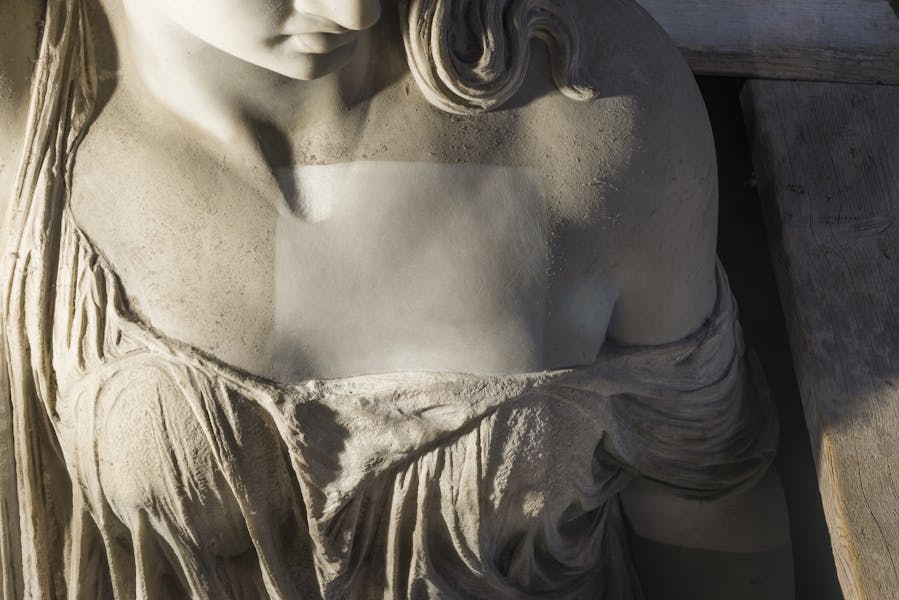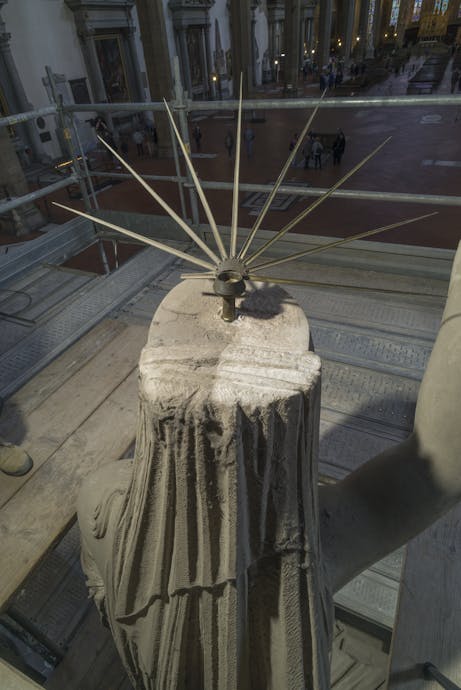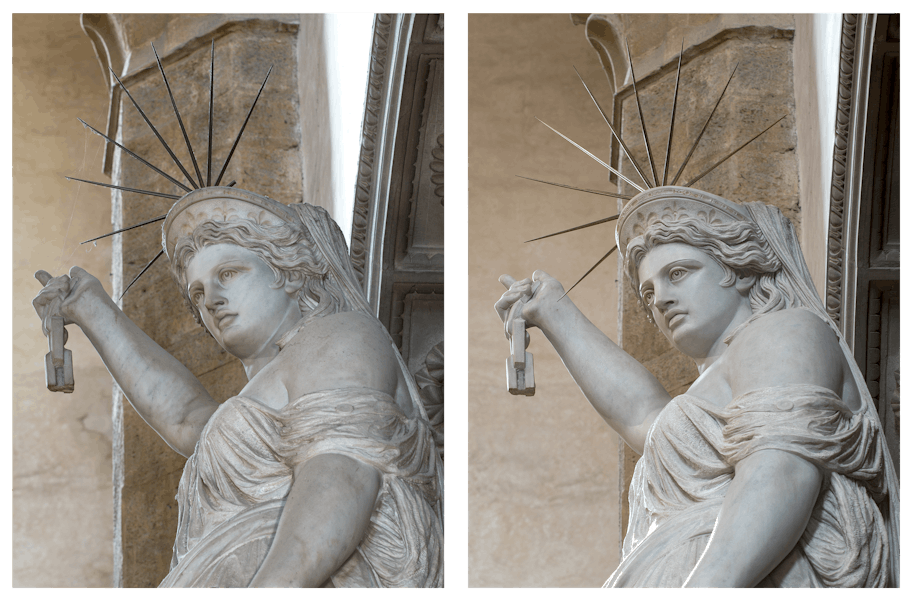
Giovan Battista Niccolini's Monumental tomb
Giovan Battista Niccolini's monumental tomb was in unsatisfactory condition because, having received only summary cleaning and a patina on its lower part after the flood of 1966, it was suffering from a generally shabby appearance caused by compact and abundant deposits of dust marring its surface and making it impossible to appreciate the composition as a whole.
The surface beneath the layers of dust had yellowed in many points, and even turned brown in some. This very dark shade, which was present throughout the monument rather than on its lower part alone, was the result of a patina applied in an effort to attenuate whitening and oil stains after removal of the mud brought by the flood. Thick, parallel light-coloured streaks also appeared all over the stele and the statue's arms due to the large amount of rainwater that had leaked from the roof of the basilica throughout the 19th and 20th centuries.
After meticulous dusting, the surfaces were cleaned chemically, albeit using different compositions based on the stubbornness and the compact nature of the subtances and deposits to be removed. Numerous compresses were applied, first locally then extensively, and this was followed by cotton swab dabbing using light mechanical pressure.
No final protective layer was applied to the stone surface, it proving sufficient to use a chamois leather to polish it, but the old wax layer was renewed.

Dusting and cleaning of marble surfaces
The brass sunburst on the top of the head, consisting of a kind of torch with nine rays screwed onto it, had one ray broken ray and another missing. Being very dark and stained both by surface deposits and by the deterioration of old treatments that had given it a matt brownish-green colour, it was cleaned with compresses, while the last residues were removed mechanically with the use of micro-brushes, and finally, a protective layer of rustproofing was applied. The missing ray was rebuilt with fiber-reinforced epoxy-based stucco on the basis of a plaster cast, glued with resin and given a final patina.
Restoration of the background plaster, the mortar band and the pietra serena stone of the arcosolium was equally demanding.

The restoration on the brass sunburst on the top of Liberty of Poetry's head
The restoration revealed an interesting peculiarity: compared to other work by the artist which tends to be highly polished and smooth, the surface of this statue has a different finish, revealing all the traces of the tools that the artist used to finish it. In all likelihood, after bringing the sculpture, which had almost certainly been finished by assistants in the workshop, to Santa Croce, Pio Fedi reworked the surface on site, chiefly with a chisel, in order the better to highlight the chiaroscuro contrast created by its final position against the inner façade.
The monument was then reproduced in a very high resolution 3D scan performeed by Kent State University for display in the exhibition entitled Sisters in Liberty promoted by the Opera di Santa Croce in conjunction with the Ellis Island Museum of Immigration in New York (2019-20).

The comparison before and after the restoration